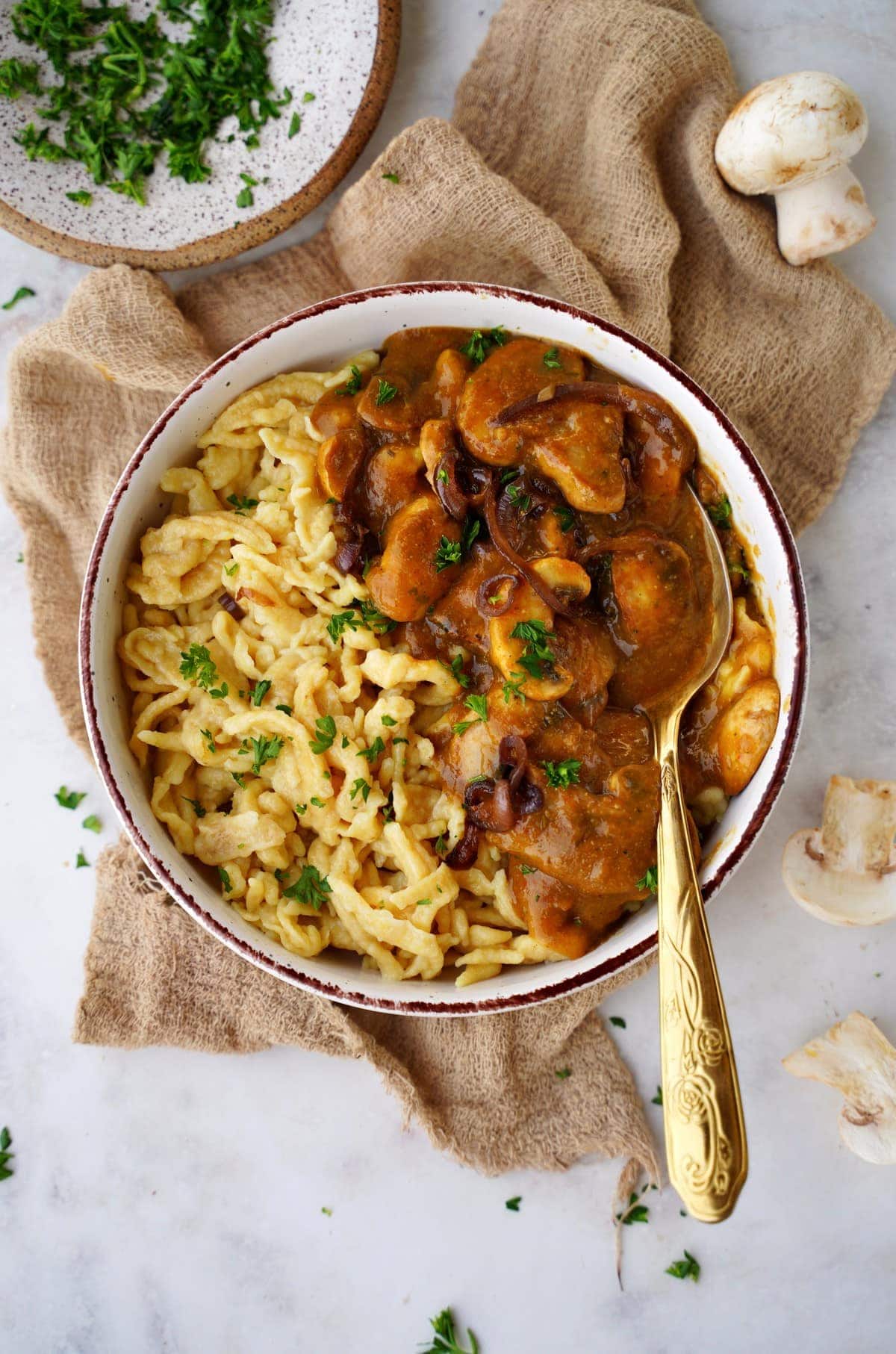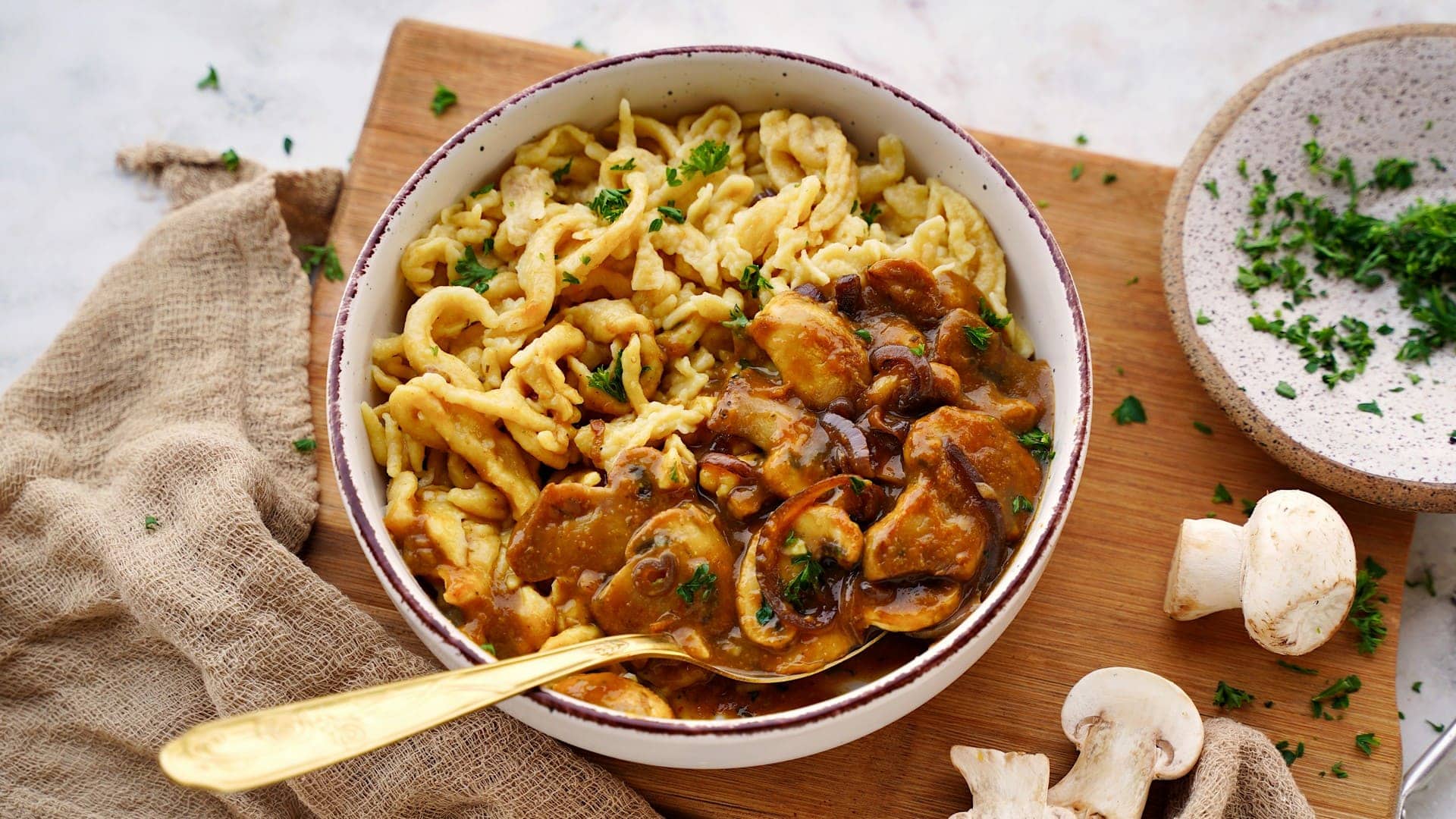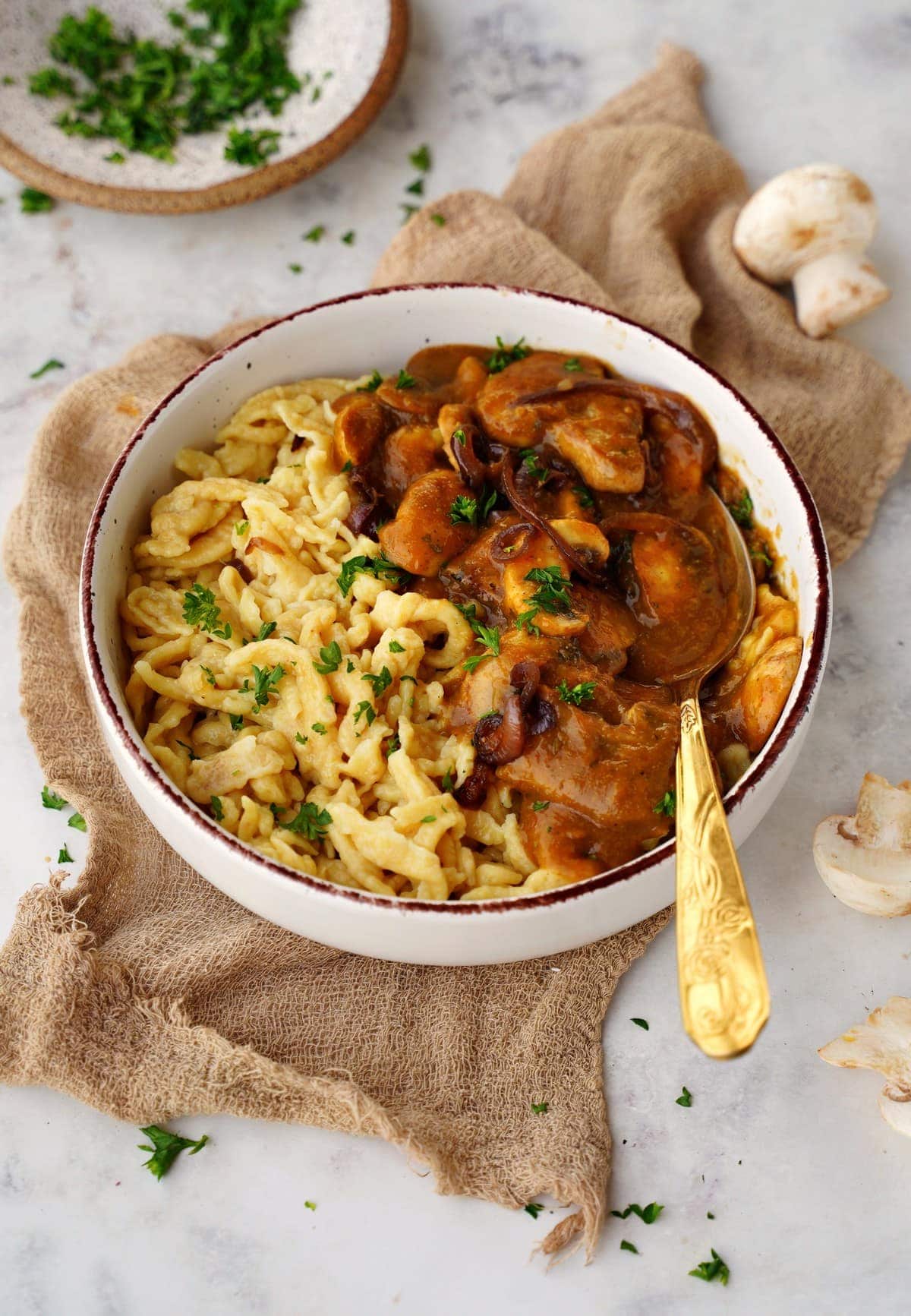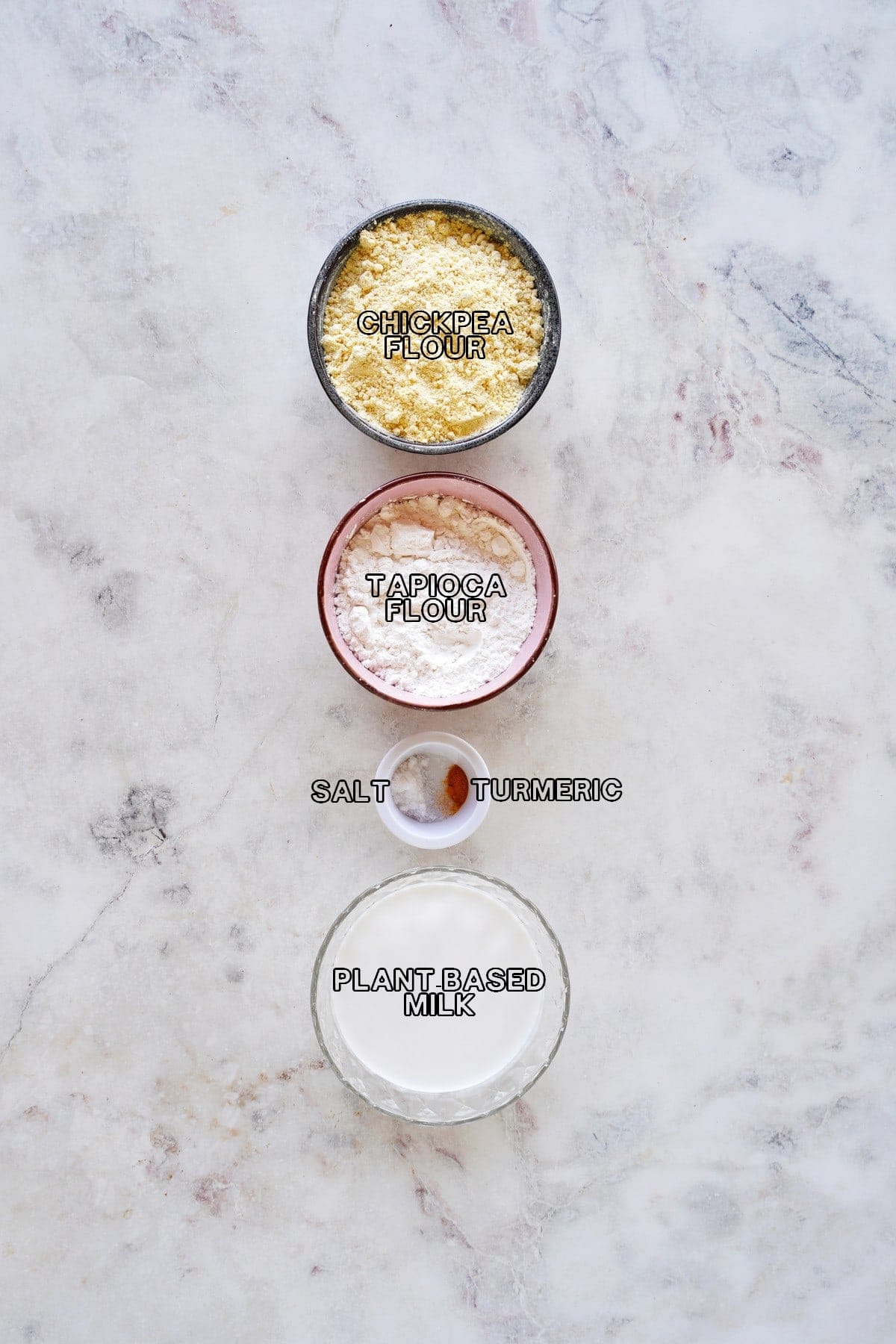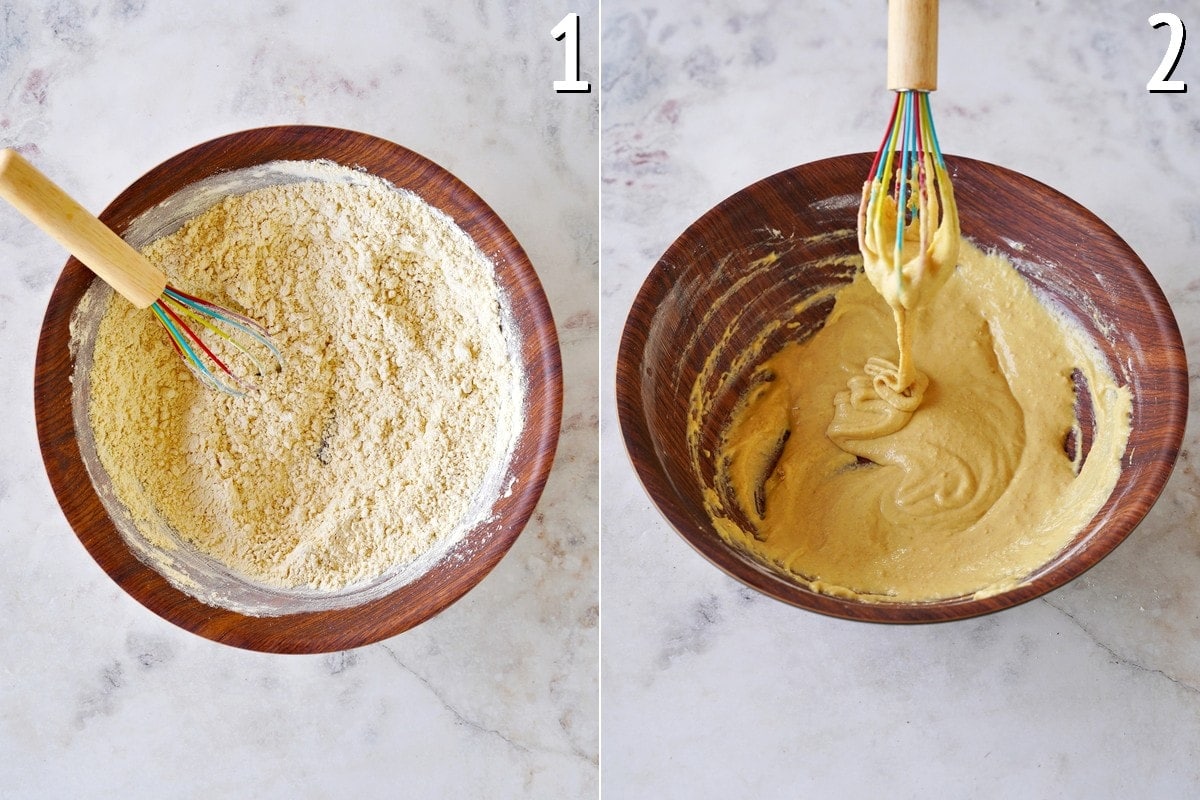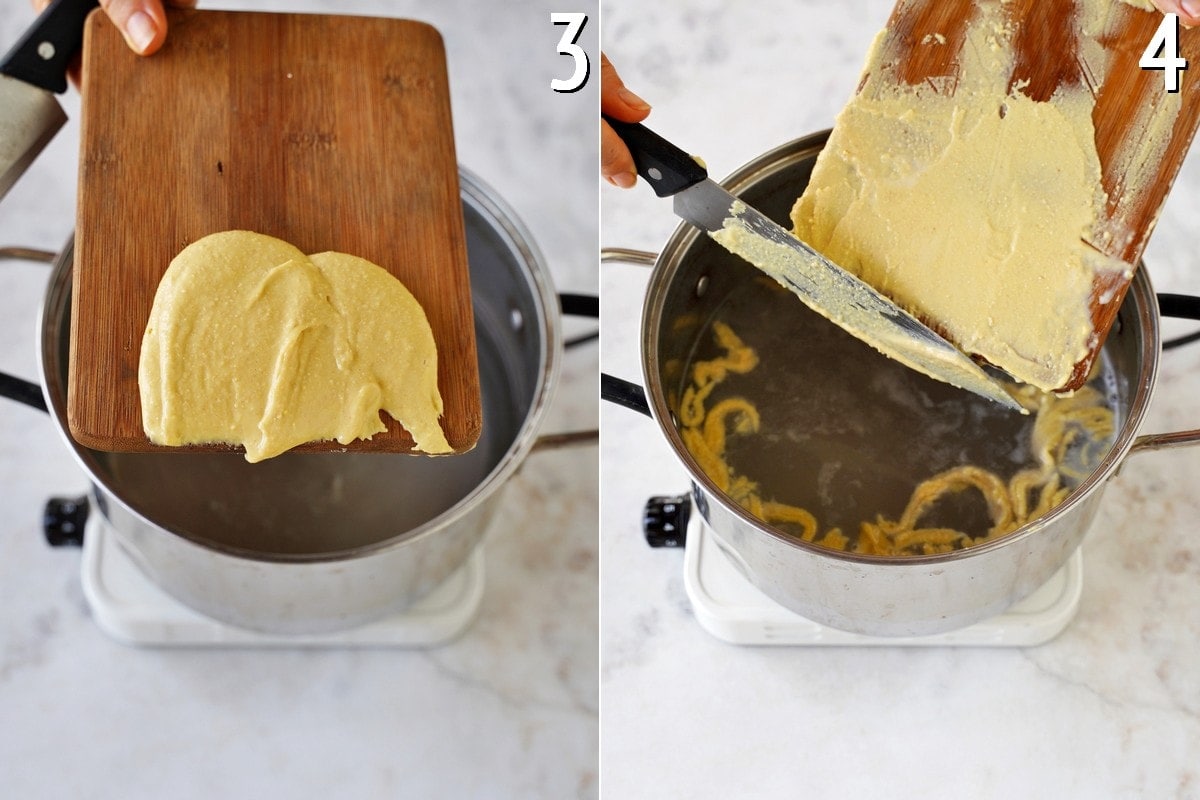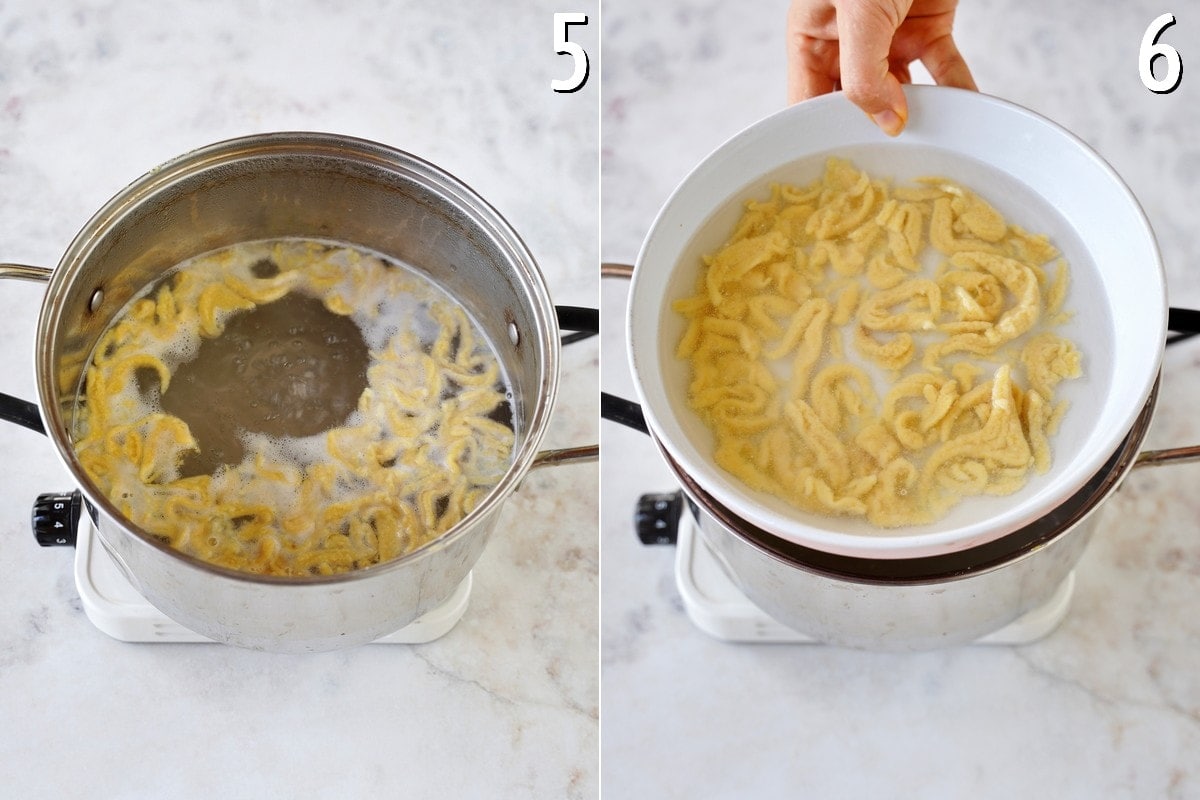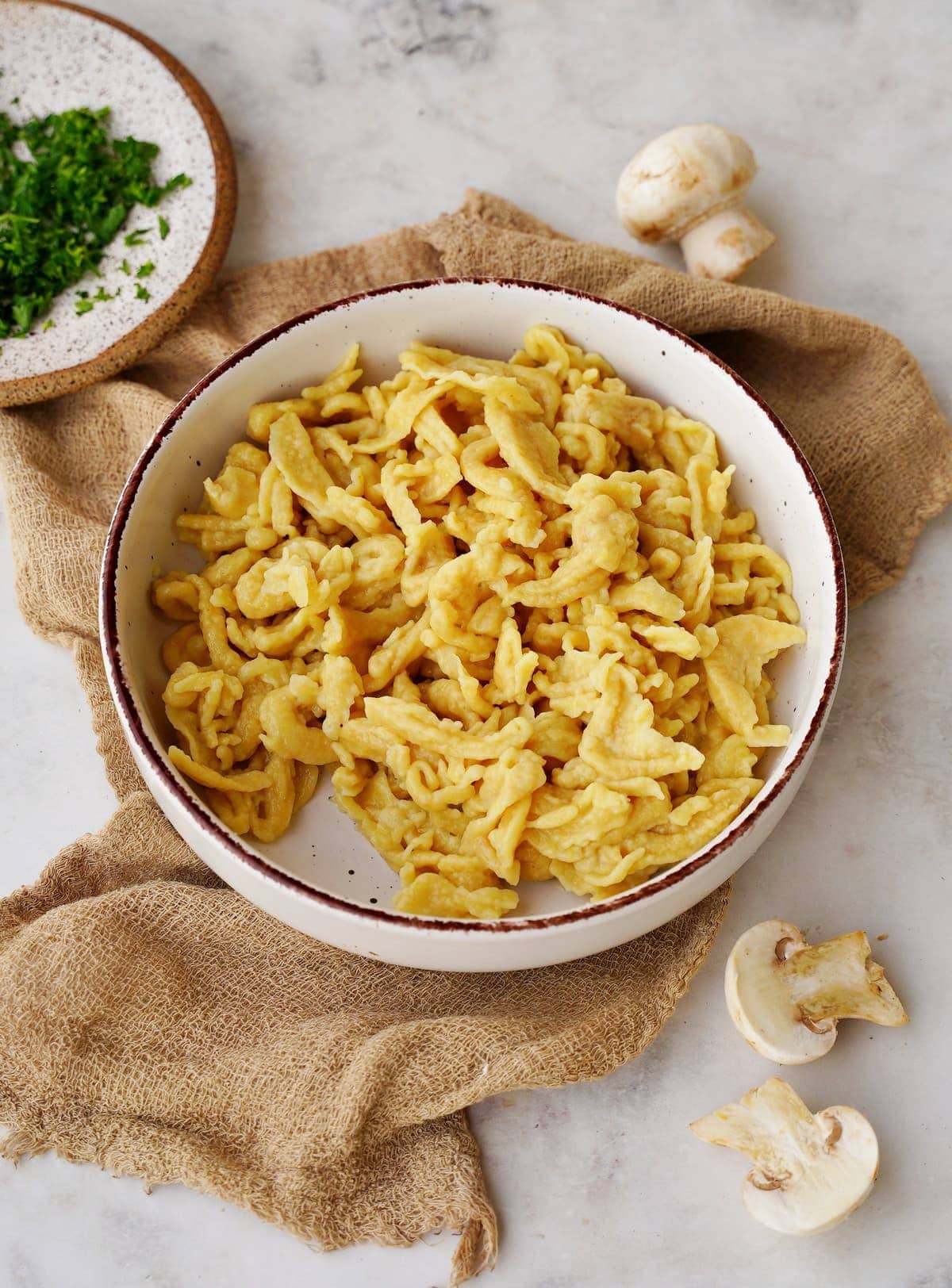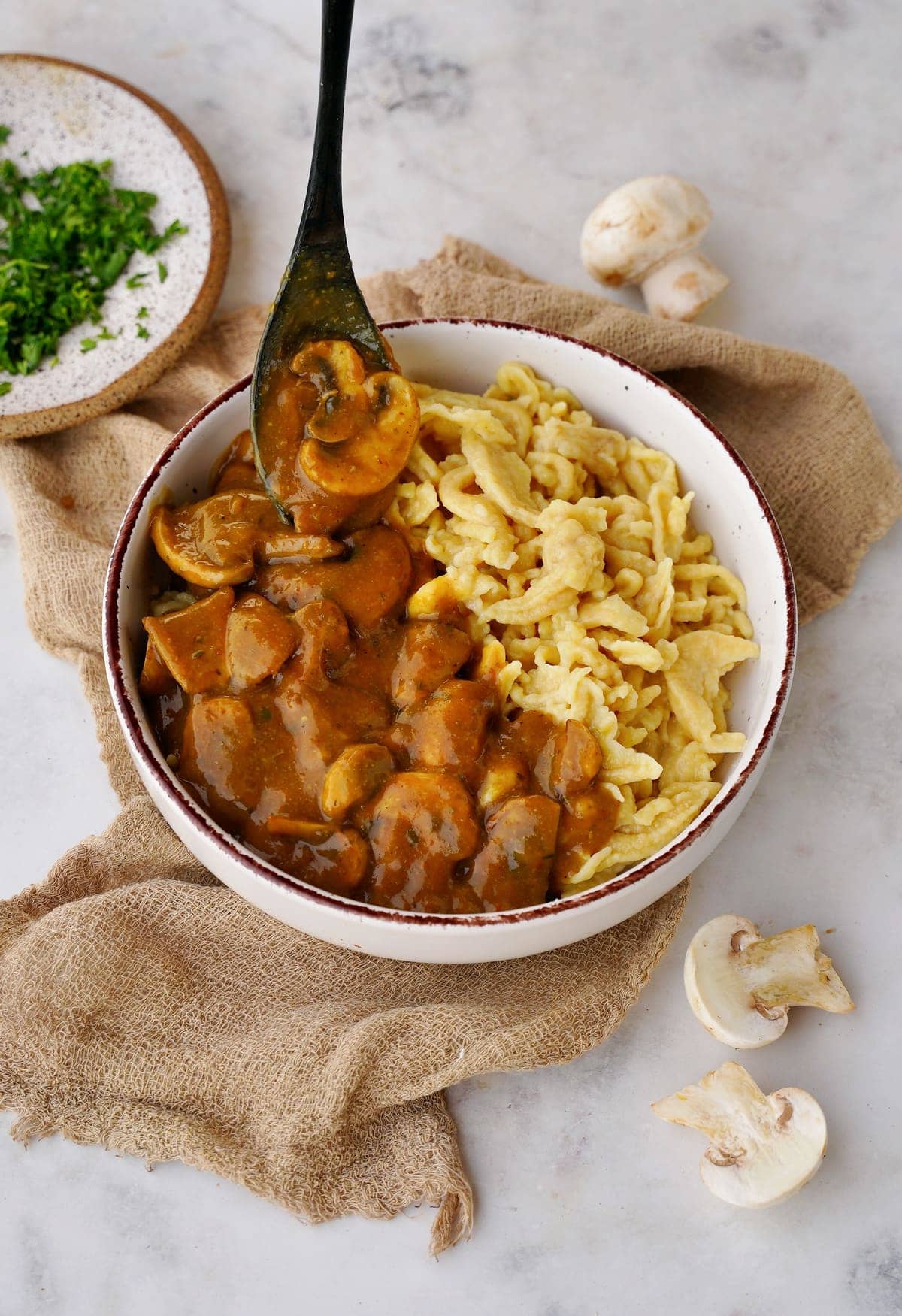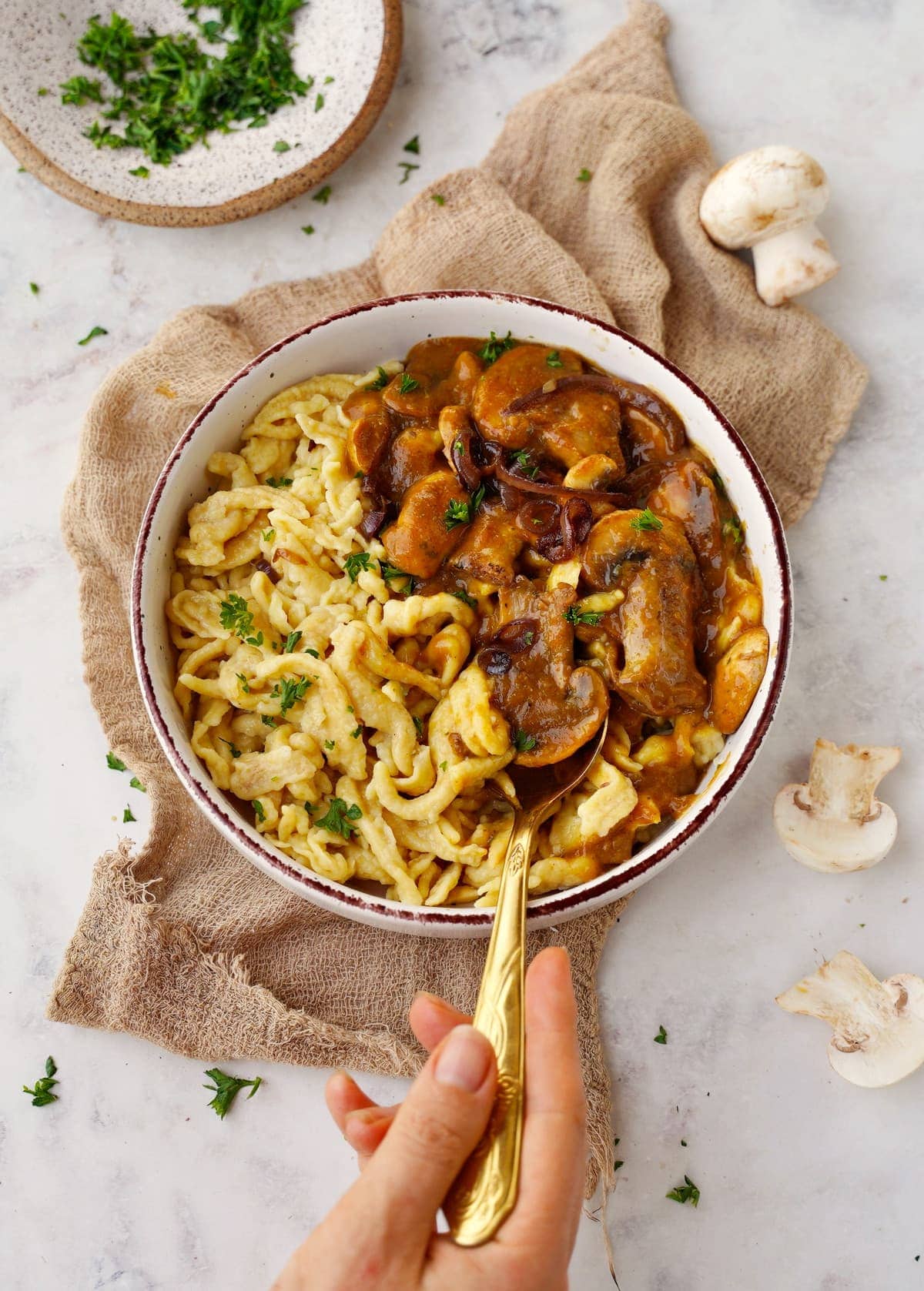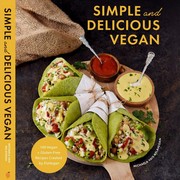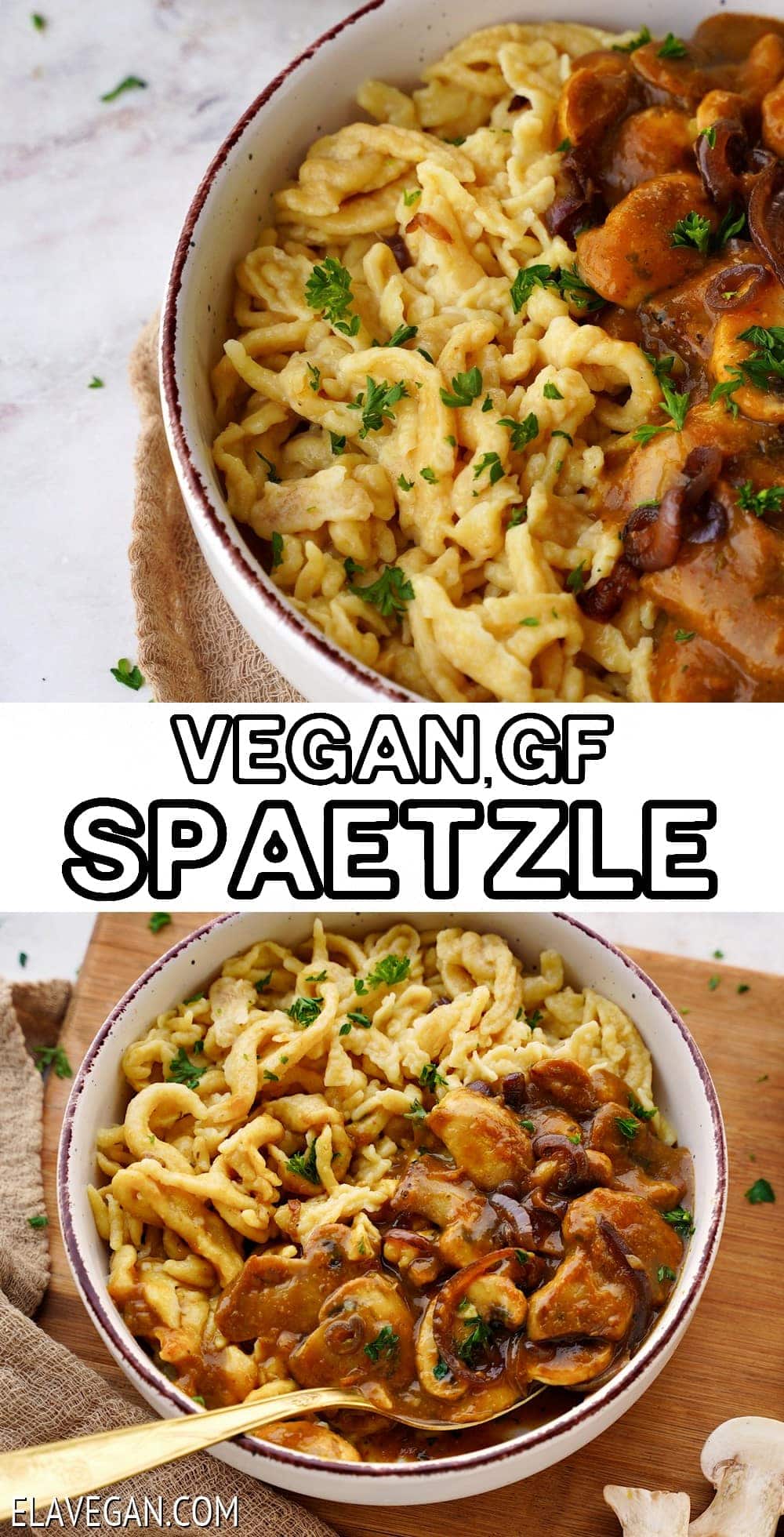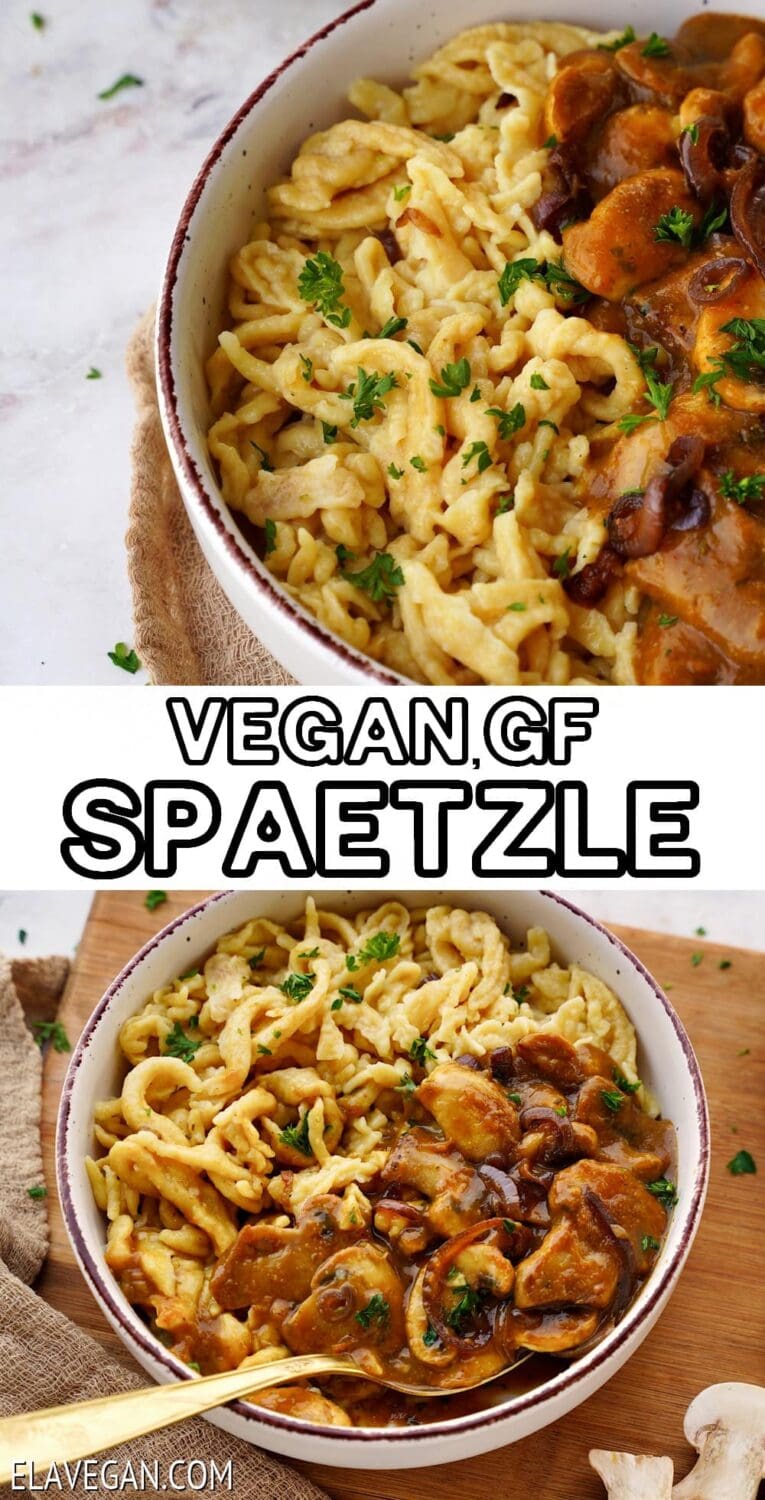20-Minute Easy Gluten-free and Vegan Spaetzle Noodles
It’s no secret that I adore comfort food, nothing more so than one of my German childhood favorites like German potato dumplings (Kartoffelklöße), potato noodles (Schupfnudeln), and these, now-turned vegan and gluten-free, spaetzle noodles (Spätzle). Depending on the tool used to make them, spaetzle noodles are probably one of the easiest ‘noodles’ you can make at home, too! All you need to do is mix the dough, use your preferred method of dropping it into boiling water, and cook the spaetzle dumplings for just a few minutes—and voilà! Once cooked, enjoy the German noodles immediately sautéed in a little vegan butter or with a gravy/sauce like this mushroom Geschnetzeltes. They also store well for several days in the fridge and several months in the freezer for a simple, versatile side or main.
What Is Spaetzle (Spätzle)?
Spätzle translates to ‘little sparrow’ (also called Knöpfle) and describes a type of small, slightly chewy, uneven-looking egg noodle/ mini dumpling originating in the South-Western Swabia region in Germany (though popular across several European countries, including Austria, Hungary, Switzerland, etc.). The noodles typically contain simple ingredients, including flour, eggs, salt, and water. They were traditionally shaped by hand or a spoon, resembling sparrows in shape, though there are now several methods to shape the noodles, including a specific spaetzle maker. For this version, I’m ditching the traditional ingredients in place of a gluten-free, egg-free, vegan spaetzle recipe made using protein-rich chickpea flour. I’ll also show you how to make spaetzle without a spaetzle maker because everyone deserves to enjoy these German noodles.
The Ingredients
This vegan spaetzle recipe may be gluten-free and egg-free, but it still relies on just four simple ingredients to prepare.
Chickpea flour: Tastes delicious and makes for high protein homemade spaetzle. Tapioca flour: To make a viscous dough similar to traditional egg spaetzle dumplings. You may also use arrowroot flour, but I don’t recommend cornstarch, as the dumplings turn out a little mushy. Salt: To season the vegan egg noodles batter. Turmeric: (Optional) Turmeric powder provides the egg-free spaetzle with the traditional golden color usually given to it by egg yolks. Plant-based milk: Any dairy-free milk will work. I.e., almond milk, soy milk, cashew milk, etc. You can also use water.
For a little extra flavor, a small amount of grated nutmeg tastes delicious in this German pasta (just like in traditional German mashed potatoes) and/or garlic powder. You could also use a pinch of Kala Namak (black salt). For the full ingredients list, measurements, complete recipe method, and nutritional information, read the recipe card below.
How to Make Spaetzle?
Follow four simple, low-fuss steps to prepare this homemade German gluten-free spaetzle recipe.
First, combine the chickpea flour, tapioca flour, salt, and turmeric powder in a medium bowl and stir. Then, gradually pour in the plant-based milk (or water), whisking until the batter is smooth and slightly viscous.
It shouldn’t be runny enough to pour, and is more like a very thick batter that drops off the spoon in clumps. Refer to the recipe video for a visual guide.
Next, bring a large pot of salted water to a rolling boil. Working in batches, spread some of the dough onto a small wooden cutting board in a thin layer. Using the back of a knife (or a bench scraper – wet it first), scrape off long, thin strips of the dough into the boiling water.
Allow the spätzle to cook for about 3 minutes, then use a slotted spoon to remove them from the pot (or pour them into a strainer) and rinse them with cold water OR transfer them to an ice bath for 20 seconds.
You can then enjoy the homemade spaetzle with your sauce of choice OR finish them in a large skillet, tossed with vegan butter and a little salt. Enjoy immediately!
Serving Recommendations
The versatility of spaetzle noodles is just one of my main reasons for loving this dish, as you can enjoy them in so many ways, including:
Sautéed with a bit of vegan butter and topped with vegan shredded cheese Add crispy fried onions/caramelized onions and herbs (chives, parsley, or basil) to the above (or combine the cheese and onion to make a baked casserole of German cheese spaetzle, called Käsespätzle) With sautéed mushrooms, onions, mushroom gravy or creamy mushroom sauce (Geschnetzeltes), and fresh herbs With vegan Stroganoff or goulash Topped with meatballs in gravy
Spaetzle also makes for a simple and delicious side dish instead of other pasta or potatoes.
How to Store?
Store: Once cooked and rinsed, you can store the homemade spaetzle in the fridge for 2-3 days. It can help to add a little oil to stop the noodles from clumping together. Freeze: Spread the rinsed cooked gluten-free spaetzle dumplings across a pan in a single layer and flash freeze them until solid. Then, transfer them to a freezer-safe airtight container or Ziplock bag and store them for 3-4 months. Reheat from frozen or thaw overnight in the fridge first. Reheat: You can reheat the noodles, either briefly in boiling water or pan-frying them with a little oil.
Can you make spaetzle without a spaetzle maker?
Absolutely. It’s actually fairly simple to use tools around your kitchen. For example, I used a traditional wooden board method for long, thin noodles (which takes a little practice). However, you can also use a potato ricer or pasta (noodle) extruder, a colander, a cheese box grater, or even a slotted spoon/skimmer.
What is the difference between Spätzle and Knöpfle?
Both spaetzle and knoepfle are noodles made from the same dough and cooking method. The difference lies in their shape. Whereas spaetzle noodles are usually longer and thinner, knoepfle means ‘little knot/ button.’ It refers to a shorter, rounder variety of the noodle, often made using a sliding spaetzle maker, which transfers ‘droplets’ of dough rather than long noodles into the boiling water. However, the terms are often used interchangeably.
Recipe Notes and Tips
When pan-frying: Cooling them first works best for crisper noodles. Don’t skip the rinsing/ice bath: Otherwise, the vegan spaetzle may stick and clump together and won’t store well. Adjust the amount of milk: I recommend using 3/4 cup for scraping the dough and 2/3 cup when pressing it through perforated tools.
More Vegan Pasta Recipes
Gluten-Free Gnocchi (Vegan) Garlic noodles (pasta Aglio e olio) Vegan Mushroom and Leek Pasta Creamy lemon pasta One-pot veggie pasta Garlic butter pasta
Or browse through my list of 27 vegan pasta recipes you’ll love! If you try this easy vegan, gluten-free spaetzle recipe, I’d love a comment and ★★★★★ recipe rating below. Also, please don’t forget to tag me in re-creations on Instagram or Facebook with @elavegan and #elavegan—I love seeing them.
